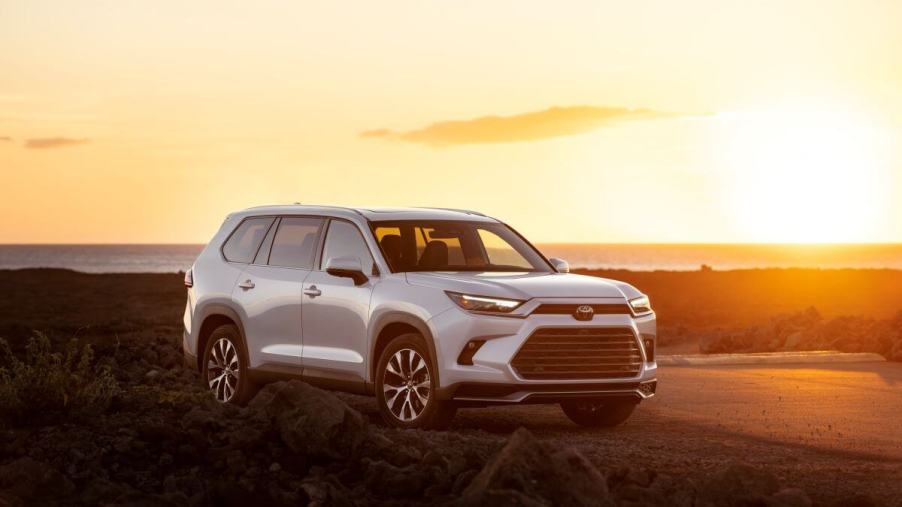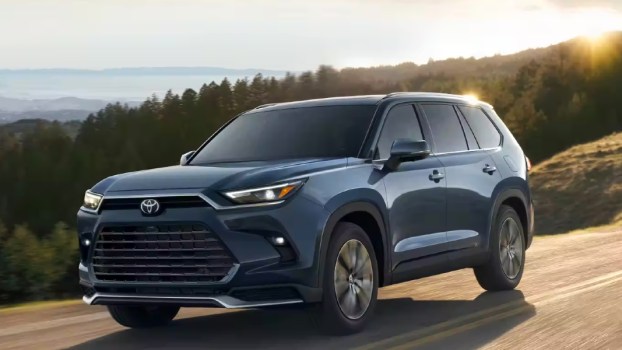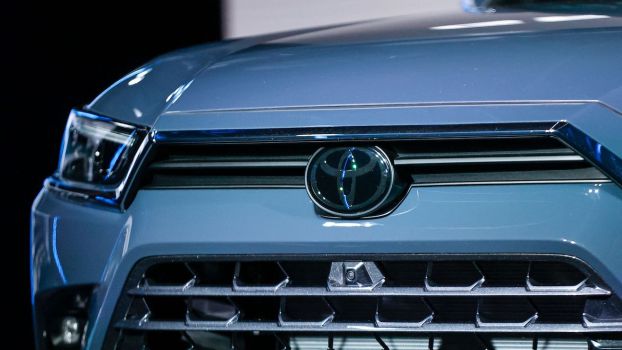
2024 Toyota Grand Highlander: What Are Its Biggest Strengths and Weaknesses?
The Toyota Grand Highlander is an all-new entry in a competitive class of midsize three-row SUVs. It’s a new model from an old player in this segment. Toyota is a pioneer in this class with the Highlander that’s been around since the 2001 model year. Now, it has a big brother in the form of the bigger, roomier, and pricier 2024 Grand Highlander.
So, where does this new Toyota SUV succeed, and where does it fail? Here are some of the pros and cons of the all-new Toyota Grand Highlander.
2024 Toyota Grand Highlander advantages
The Toyota Grand Highlander is a compelling midsize three-row SUV for many reasons. Slotted above the regular Highlander, the Grand Highlander is a roomier and more upscale alternative to the tried and true Highlander. Its spacious interior is on par with some of the roomiest SUVs in this class, namely the Chevrolet Traverse and Volkswagen Atlas, with a roomy cabin that makes this SUV appealing to families.
We also like that three powertrains are available in the Toyota Grand Highlander. The standard engine is a turbocharged four-cylinder engine. However, there are two more compelling hybrid options available. The Grand Highlander Hybrid uses a four-cylinder hybrid powertrain with 245 horsepower and up to 36 combined mpg, according to the EPA. If you crave both power and efficiency, the Hybrid MAX powertrain makes 362 hp while returning up to 27 combined mpg. For reference, the base, non-hybrid powertrain gets up to 24 combined mpg.
The Grand Highlander has a Sienna problem
The biggest weakness of the Toyota Grand Highlander is that it shares a dealer lot with the Toyota Sienna. The Grand Highlander is the most minivan-like SUV in the Toyota lineup, but it’s more expensive, less roomy, and less fuel-efficient than the Sienna.
Let’s compare the Toyota Sienna (which comes standard with a hybrid powertrain) to the hybrid-powered Grand Highlander, which uses the same powertrain. The Toyota Sienna starts at $42,495 in the XLE trim, and the Toyota Grand Highlander Hybrid begins at $44,670 for its XLE model. The Sienna has an LE trim available at an even lower starting price of $37,185.
What about interior space? The second-row legroom in these two family vehicles is almost identical. However, the Sienna has 5.2 more inches of third-row legroom than the Grand Highlander. It’s a similar story with cargo space. The Sienna has an extra 12.9 cubic feet of cargo volume behind the third row of seats and 17.3 more cubic feet behind the second row compared to the Grand Highlander.
Fuel economy is similar since they use the same powertrain. The combined fuel economy rating is 36 mpg with FWD in both vehicles. If you add AWD, the Sienna gets 35 mpg, and the Grand Highlander gets 34 mpg.
Is Toyota’s new SUV or minivan the better buy?
The Toyota Grand Highlander is an SUV that tries to do the job of a minivan, but it’s worse than its own brand’s minivan offering in every measurable way. The only objective advantage of the Grand Highlander over the Sienna is the availability of the Hybrid MAX powertrain, generating 362 horsepower and 400 lb-ft of torque. That gives it performance that the Sienna can’t match, but it has a costly starting price of $54,040.




